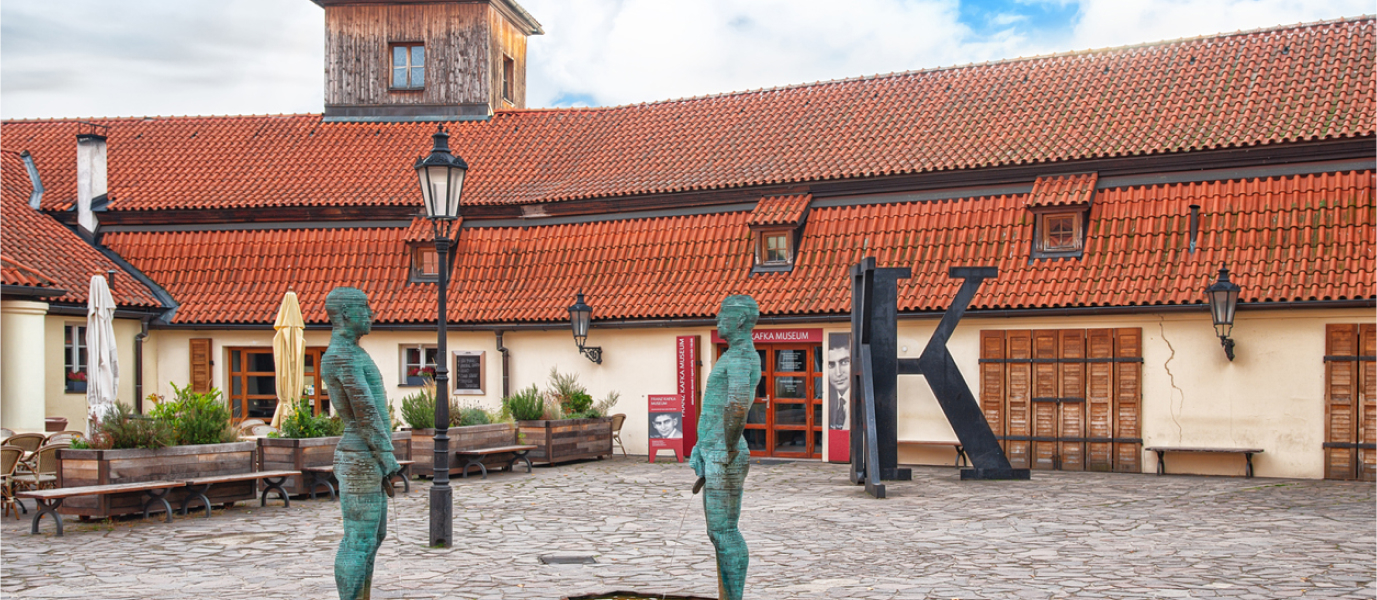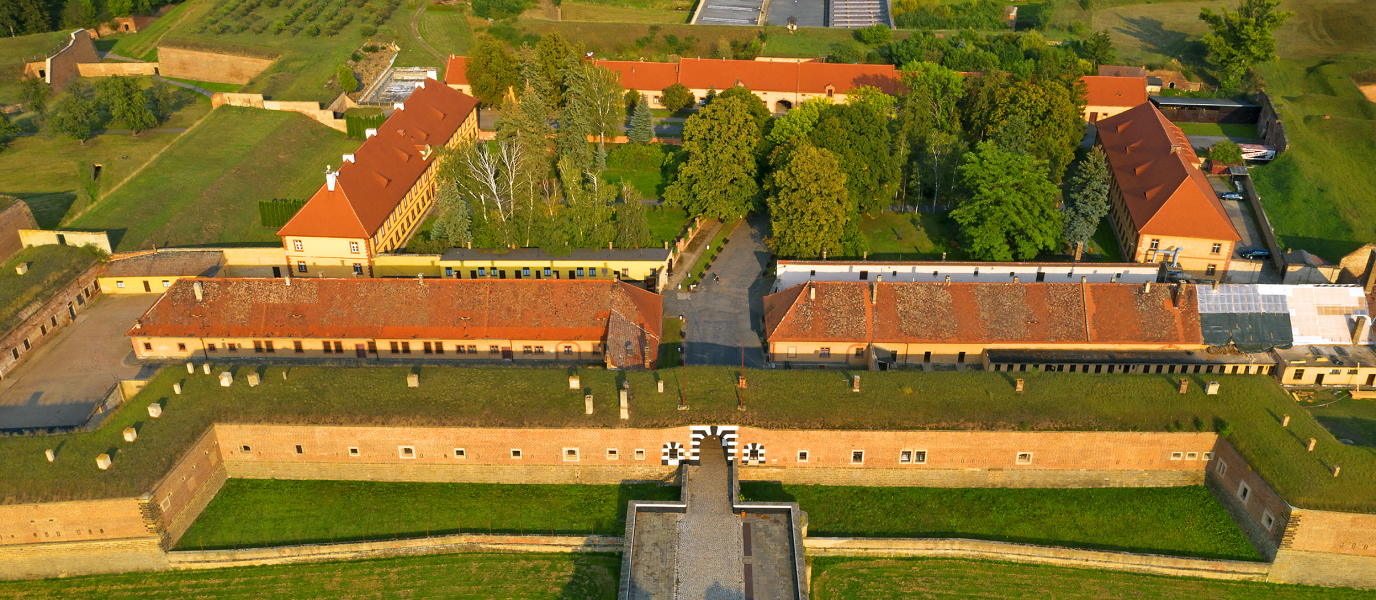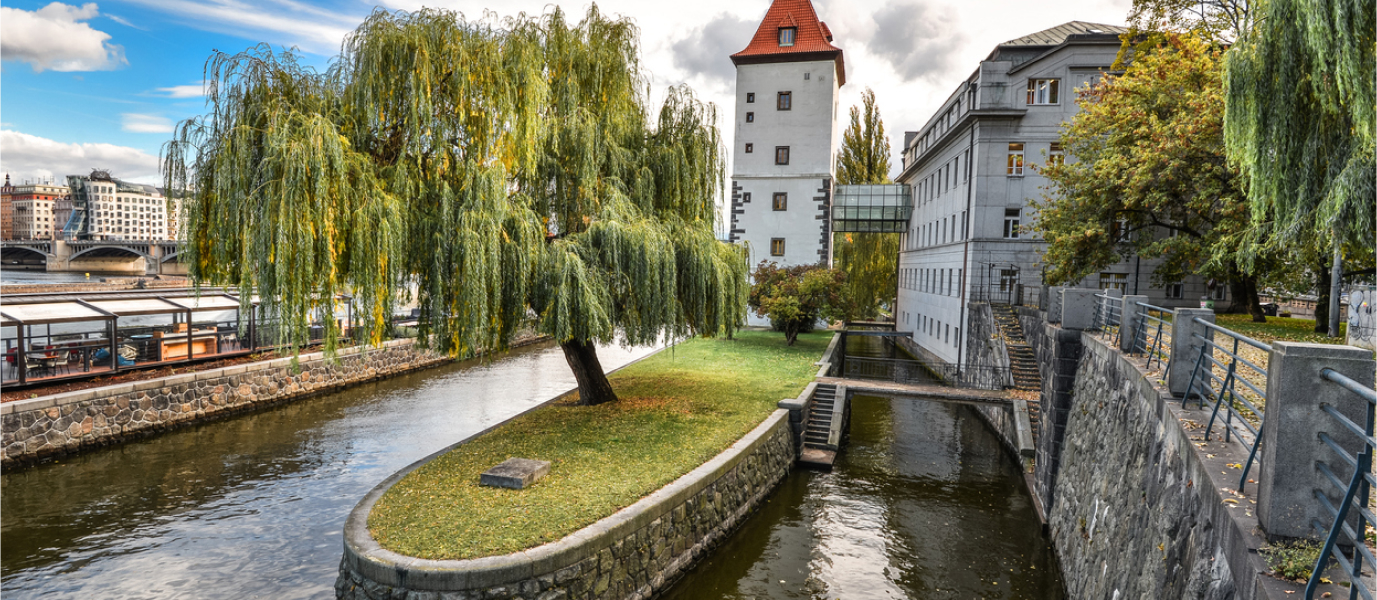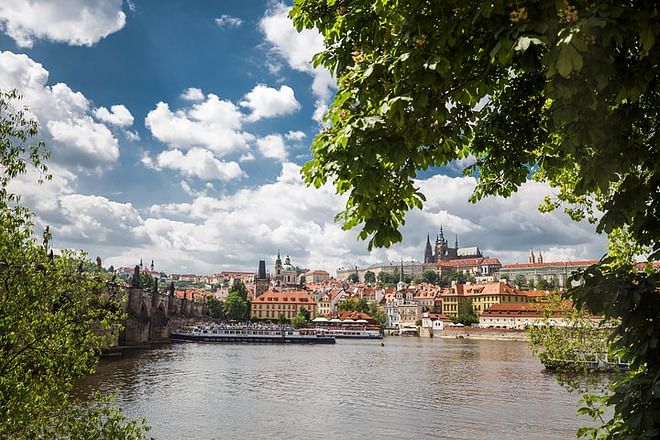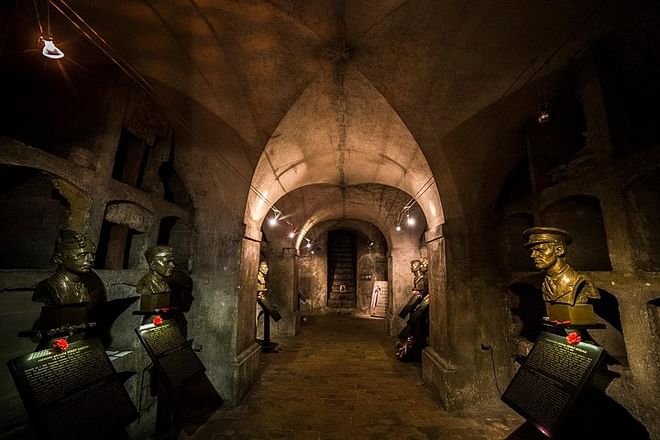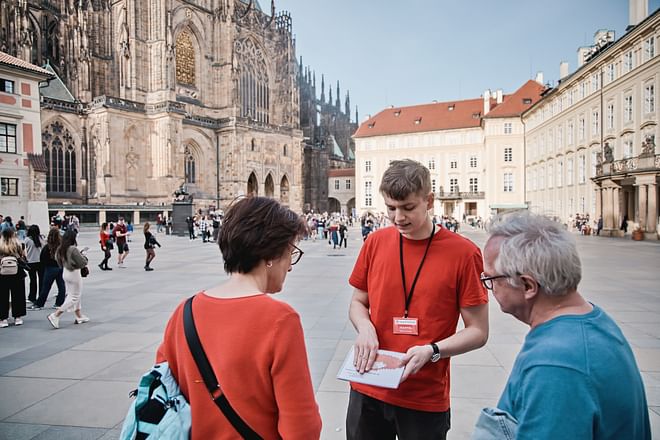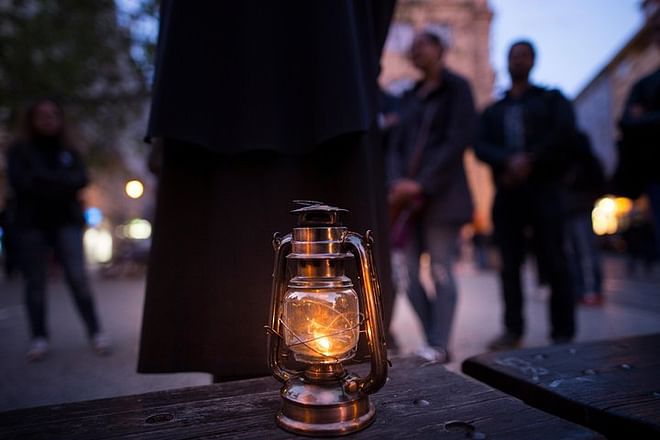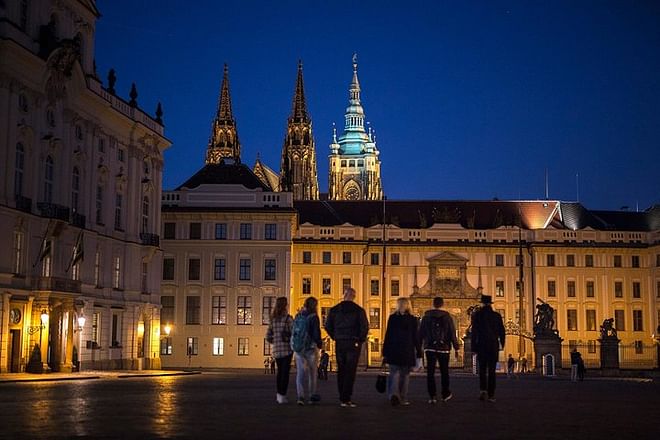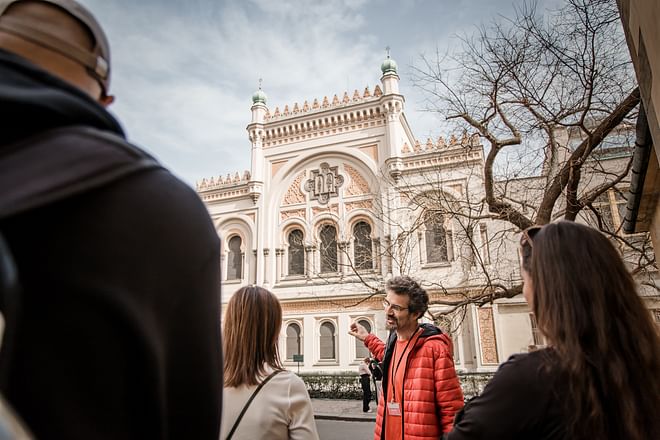We’re sure that all fans of Franz Kafka like the idea of tracing his footsteps around the city that watched him grow up, inspired him and served as his home for practically his whole life: Prague. However, if you’re not overly familiar with the work of this celebrated author but you find yourself in the capital of the Czech Republic, you can learn about this Bohemian figure by discovering some of Prague’s most beautiful spots through Kafka’s eyes.
Even though Kafka’s work was rejected for large spells by his fellow citizens (because it was written in German), it is now difficult to find a street in Prague that doesn’t bear any reference to the city’s most famous son. These include sculptures, commemorative plaques, souvenir shops and, of course, the Franz Kafka Museum. This permanent exhibition tries to recreate the distressing and gloomy atmosphere that the author managed to weave together in his writing. Exploring Prague through the eyes of Kafka is a truly unmissable experience.
Franz Kafka’s impact on the city of Prague
Kafka had something of a love-hate relationship with his city. He was obsessed by Prague but, at the same time, felt trapped by it. The influence that the city had on his writing, while never explicitly admitted, is crystal clear. You can learn much more about Kafka’s personality by taking a tour of various places which were once frequented by the author.
Kafka was born on 3 July 1883 to a family of Ashkenazi Jews who belonged to Prague’s wealthy upper class. The first stop on this Kafka Tour takes us to number 5 U. Radnice Street, on the edge of Josefov. This is the Jewish Quarter, which is located very close to the Old Town Square. While the house that currently stands on this spot was constructed in 1902, the original façade remains as a testimony to the author’s birthplace. There is also a commemorative plaque, informing passers-by that this was Kafka’s first family home. It’s easy to close your eyes and imagine a young Kafka peering through the window and admiring the St Nicholas Church.
He was the eldest of six siblings, and it didn’t take long for tragedy to strike his family. His two youngest siblings died before Franz had reached the age of seven. His three sisters would survive until the Nazi occupation of Prague, eventually dying in the Holocaust. His father’s tyrannical and authoritarian attitude would have a striking impact on Kafka’s education.
The family weren’t strict followers of Jewish traditions, and Franz soon developed a strong interest in socialism. As was commonplace in Prague at the time, Kafka spoke Czech and German. Some of his favourite writers included Nietzsche, Flaubert, Goethe and Cervantes. Kafka’s personality was gradually shaped by the narrow streets of the Jewish Quarter and the Old Town. In the Josefov neighbourhood, before reaching the Spanish Synagogue, be sure to check out the huge Statue of Franz Kafka: a four-metre-tall bronze sculpture made by Jaroslav Róna, which seeks to depict his literary philosophy and mankind’s constant anguish in the face of reality.
Between 1907 and 1913, Kafka lived in a house called Zum Schiff [‘at the ship’] on Pařižská Street. This house enjoyed a view of the Vltava river and Charles Bridge, with these settings serving as inspiration for him when writing The Judgement. Not far from this spot lies another luxurious building where the Kafka family once lived: Oppelt House. If you start walking up towards Prague Castle—a monument which had a notable influence on Kafka’s book The Castle—you will reach the Golden Lane. Number 22 of this street was one of the most important locations in the life of the author. For a short while, Kafka lived in this house alongside his sister Ottla. After distancing himself from his father’s oppression, Kafka started to open his mind. It was in this small brick house where Kafka would start to unleash his literary potential. Many followers of Kafka come to this residence to pay homage to the author.
You could also retrace Kafka’s steps around Chotek Gardens, which he claimed was the most beautiful place in the whole city. He often spent his afternoons walking around the Royal Garden and the Botanical Garden, which are other good places to visit. Café Slavia and Café Louvre remain to this day, where Kafka and other intellectuals of the time would spend endless hours debating with one another.
The author of The Metamorphosis was diagnosed with tuberculosis at the young age of 34 years old. During his period of illness, he spent lots of time bed-ridden but never ceased writing. His disease worsened in 1924, and Kafka was subsequently admitted to Dr Hoffmann’s Sanatorium in Kierling, where he would pass away on 3 June of the same year. He died before he could witness the horrors of the Nazi occupation, although his sisters suffered through it. He was buried on 11 June in the Žižkov Jewish cemetery, laid to rest alongside his parents. Close to the grave is a plaque commemorating the lives of his sisters, who sadly died during the Holocaust.
The Franz Kafka Museum in Prague
It’s impossible to give an overall explanation about the author’s complex personality, and the meaning behind his work, in just a few lines. The best way to understand his mind is to discover the symbiosis that was created between the author and the city in which he was born. He doesn’t mention specific landmarks or streets in any of his novels or tales, but he didn’t need to. He knew Prague like the back of his hand, and this was evident in his writing.
In his notebooks and diaries, Kafka described his feelings of helplessness, solitude, oppression and persecution. The very same sensations that he would manage to transmit in his books. His characters were tormented, yet still tried to squeeze every last drop of life. Conflicts, anxiety, blame and existential doubts are blended with fantasy elements, creating unique protagonists such as Gregor Samsa, who became a monstrous insect in The Metamorphosis.
These claustrophobic atmospheres are those which the Franz Kafka Museum seeks to recreate during your visit. The museum, which is located in the Malá Strana neighbourhood, first opened its doors in 2005 in the building that previously housed the Herget Brickworks factory, just a stone’s throw from Charles Bridge. The exhibition is divided into two spaces:
- Existential Space. In this space, you can explore Kafka’s childhood and formative years through various photographs, letters and belongings, such as the author’s Law studies diploma. Prague, and the influence that the city had on the writer, always remains the focus. For Kafka, the city was both a prison and a refuge; he was attracted by Prague’s magical charm, but it also subjected him to negative experiences such as his father’s oppression. His correspondence with lovers, close friends and companions, small original sketches, first editions of his novels and evidence of the darkest periods of his illness come together to project an image of Kafka’s Prague.
- Imaginary Topography. This room holds the museum’s main attraction. In this section, the city mirrors the way in which Kafka viewed Prague in his work. The city itself has underwent a metamorphosis. Different montages depict a deformed and surreal image of Prague, showcasing a series of sites that hold dark secrets that are unveiled in the author’s work. Sound plays a key role in this section, particularly in the area dedicated to Gregor Samsa. Constant insect noises follow you around this Kafkian universe, creating the same tension and uneasiness as you feel when reading the author’s work.
Although some of the explanations are only available in Czech or German, the spine-chilling atmosphere alone, which transports us to the darkest corners of Kafka’s mind, makes this museum worth a visit. This intriguing space allows you to immerse yourself in one of the most exceptional literary minds of the twentieth century. At the entrance, be sure to stop and marvel at the fountain designed by David Černý, which depicts two men writing messages by urinating into a shallow pond in the shape of the Czech Republic. This somewhat controversial fountain encourages visitor interaction, who are able to send messages from their mobile phones which the men subsequently “write” in the water.




































































